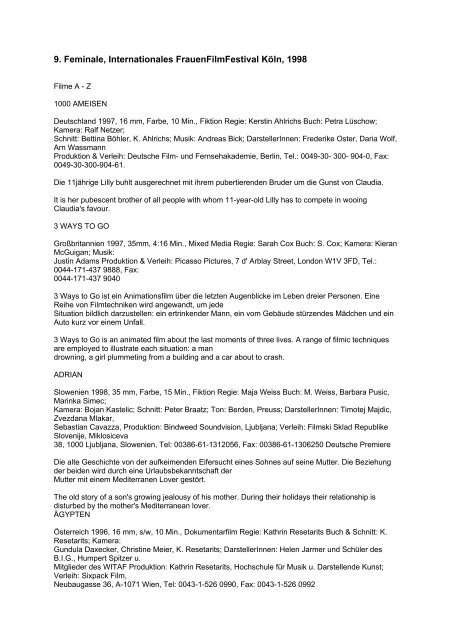
The Fluid Narratives and Subtle Depths in the Films of Chantal Akerman

# Chantal Akerman: A Profound Retrospective at the Jeu de Paume
The recent exhibition, *Chantal Akerman: Travelling*, at the Jeu de Paume in Paris, offers an immersive journey into the prolific career of one of the most influential filmmakers of the 20th century. Spanning her work from her early ventures in the 1960s to her genre-defying installations in the 1990s, the exhibition captures Akerman’s bold, boundary-pushing, and introspective vision as both a filmmaker and visual artist.
Akerman’s career was remarkably multidisciplinary, with her work seamlessly traversing documentary and fiction, personal and political, stillness and motion. Best known for her radical feminist films, such as *Jeanne Dielman, 23 Quai du Commerce, 1080 Bruxelles* (1975), which was recently anointed as the greatest film of all time by the British Film Institute’s highly respected *Sight & Sound* poll, Akerman’s creative output also engaged deeply with video installations and gallery spaces. Indeed, her early transition from the traditional cinematic arena into museum and gallery installations opened new avenues for interaction, compelling viewers to participate more actively in her narratives.
Let’s delve into the exhibition’s most significant elements and reflect on Akerman’s vast contributions to both film and visual arts.
## Early Career Markers
Akerman’s journey into filmmaking started remarkably young. Born in Brussels to Holocaust survivors, she submitted her student film *Saute Ma Ville* (1968) — a frenetic tragicomedy suffused with raw energy — as her entry into the prestigious INSAS (Institut national supérieur des arts du spectacle et des techniques de diffusion). The film is a potent first reminder of Akerman’s signature theme: the juxtaposition of the mundane with violence or tragedy.
Her burgeoning work in the 1970s explored feminist themes that intimately examined women’s daily lives, expressed in her use of long static shots. This evolved into a feminist critique of domestic spaces, further embodied in her magnum opus *Jeanne Dielman*.
## “Woman Sitting after Killing” and *Jeanne Dielman*
The first piece in the exhibition, *Woman Sitting after Killing* (2001), is a seven-monitor installation that loops the final scene from *Jeanne Dielman*. A static shot shows Jeanne, the film’s central character, sitting quietly at a table, seemingly lost in the maelstrom of her own thoughts after just murdering her client.
This installation, isolated from the broader context of the preceding events of the film, represents a fascinating study in itself. Akerman’s choice of focusing strictly on stationary moments allows an intense meditation on silence, power dynamics, and the weight of choices women make within their confined social roles. While this piece misses the intrinsic build-up achieved in the full-length film, its stark nature still beckons audiences to confront the subtle layers of meaning lying behind an “ordinary” scene.
## *D’Est: Bordering on Fiction* – A Cinematic Installation Masterpiece
In the upper galleries, the remarkable 25-channel installation, *D’Est, au bord de la fiction* (“From the East: Bordering on Fiction”) (1995), stands as one of Akerman’s most powerful meditations on shifting political and cultural identities. Originally a 16mm film from 1992, this installation immerses viewers in an elegiac world of collapse and transformation as the iron curtain lifted.
Watching slow, tracking shots of people waiting on the streets of East Germany, Poland, Russia, and Ukraine after the fall of the Berlin Wall evokes an overwhelming atmospheric experience, wrapping the viewer in drifts of contemplation about time, place, and history. Akerman is famed for her ability to find beauty and political statement in simple human moments, and this installation is a masterclass in how moving images can evoke history’s emotional undertow.
## Exploration of Akerman’s Rich Archive
A highlight of the retrospective is the meticulous archival room. Here, visitors are transported through Akerman’s creative process as they explore a range of intimate materials — from annotated screenplays to administrative papers — some of which have never been made public before. These documents are interspersed with projections of excerpts from her films, accompanied by photos, shooting logs, and production stills from her varied career.
The exhibited personal effects chronicle her travels, most notably to New York in the early 1970s — shaping much of her stylistic and thematic concerns — and footage from her experiences in the Southern United States and Mexico. This gallery not only lays out her professional journey but also emphasizes the importance of her artistic community, particularly long-term collaborators such as Sonia Wieder-Atherton, a musician who contributed to the soundscapes of Akerman’s films, and Luc Benhamou, the cinematographer who helped capture her studied aesthetic.
## A Legacy Reignited
What makes *Chantal Akerman